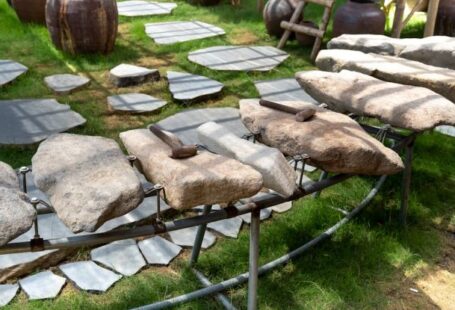Topography, the study of the shape and features of land surfaces, plays a crucial role in various fields such as geography, geology, and urban planning. While modern technology provides detailed maps and aerial imagery, capturing topography through field sketching offers a unique and hands-on approach to understanding the landscape. Field sketching allows individuals to observe, analyze, and document the natural contours and features of the land directly, fostering a deeper connection with the environment. In this article, we will explore how to effectively capture topography through field sketching, emphasizing the importance of keen observation and artistic interpretation.
Developing Observational Skills
To capture topography through field sketching, developing strong observational skills is essential. Before putting pencil to paper, take a moment to survey the landscape and identify key features such as hills, valleys, slopes, and distinctive landmarks. Pay attention to the interplay of light and shadow, as these nuances can enhance the depth and realism of your sketches. By training your eye to notice details that may go unnoticed at first glance, you can create more accurate and compelling representations of the topography.
Choosing the Right Tools
When embarking on field sketching to capture topography, selecting the right tools is crucial. Opt for a sketchbook or pad that is portable and durable, allowing you to easily carry it while exploring various terrains. Pencils of varying hardness can help you achieve different textures and shading effects in your sketches. Additionally, consider using a sturdy clipboard or drawing board to provide a stable surface for sketching outdoors. Experiment with different tools and techniques to find what works best for you and enhances your ability to convey the topography of the land.
Embracing Imperfections
Field sketching is a dynamic and spontaneous process that often involves capturing the essence of a scene rather than striving for perfection. Embrace the imperfections in your sketches, as they can add character and authenticity to your representations of topography. Allow yourself to experiment with different styles and approaches, focusing on conveying the overall structure and feel of the landscape rather than getting caught up in minute details. Remember that field sketching is a personal and subjective interpretation of the land, reflecting your unique perspective and artistic sensibilities.
Capturing Scale and Perspective
To effectively capture topography through field sketching, it is important to convey the scale and perspective of the landscape. Experiment with different techniques such as using overlapping shapes to create a sense of depth, or incorporating elements of foreground, middle ground, and background to enhance the three-dimensional quality of your sketches. Pay attention to the placement of objects in relation to one another, as this can help convey the vastness or intimacy of the land you are sketching. By mastering the art of scale and perspective, you can create more dynamic and engaging representations of topography in your field sketches.
Interpreting Contours and Textures
One of the key aspects of capturing topography through field sketching is interpreting the contours and textures of the land. Observe how light and shadow interact with the terrain to create depth and dimensionality in your sketches. Experiment with hatching, cross-hatching, and stippling techniques to convey different textures such as rocky cliffs, lush foliage, or rippling water. By paying attention to the subtle variations in tone and texture, you can bring your sketches to life and evoke the tactile qualities of the landscape. Remember that practice and experimentation are key to developing your skills in interpreting contours and textures effectively in your field sketches.
Exploring Creative Expression
Field sketching offers a unique opportunity for creative expression and artistic interpretation of the topography. Allow yourself to experiment with different styles, mediums, and approaches to capture the essence of the land in a way that resonates with you personally. Whether you prefer a realistic and detailed approach or a more abstract and expressive interpretation, embrace the freedom that field sketching provides to explore your creativity and imagination. Use color, line, and composition to convey the mood and atmosphere of the landscape, infusing your sketches with emotion and energy. Remember that field sketching is not only about accurately representing the topography but also about expressing your unique perspective and artistic vision.
Celebrating the Process
As you engage in field sketching to capture topography, remember to celebrate the process itself. Embrace the spontaneity and unpredictability of sketching outdoors, allowing yourself to be inspired by the ever-changing beauty of the land. Take the time to immerse yourself in the sights, sounds, and sensations of nature, using field sketching as a way to connect more deeply with the environment. Approach each sketching session with curiosity and openness, allowing yourself to learn and grow as an artist through the act of capturing topography in your sketches. By embracing the process of field sketching with enthusiasm and passion, you can develop a greater appreciation for the intricacies and complexities of the natural world.
Embracing the Art of Field Sketching
In conclusion, capturing topography through field sketching is a rewarding and enriching practice that allows individuals to connect with the land in a profound and meaningful way. By honing your observational skills, choosing the right tools, and embracing imperfections, you can create compelling representations of the topography that reflect your unique perspective and artistic sensibilities. Focus on conveying scale and perspective, interpreting contours and textures, and exploring creative expression to infuse your sketches with depth, emotion, and energy. Remember to celebrate the process of field sketching as a journey of discovery and self-expression, allowing yourself to be inspired by the beauty and diversity of the natural world. Embrace the art of field sketching as a way to deepen your connection with the environment and cultivate a greater appreciation for the intricacies of topography.





